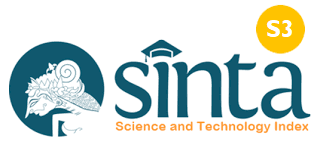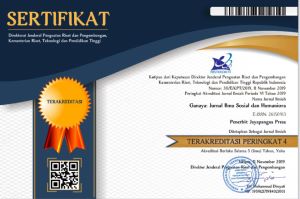Perilaku Pembelian Kosmetik Secara Online Selama Pandemi
DOI:
https://doi.org/10.37329/ganaya.v4i2.1361Keywords:
Merchandise, Price, Trust, Online Purchase ExperienceAbstract
During the Covid-19 pandemic, consumers mostly do facial and body care at home, and online transactions are no exception. Cosmetic products are risky products if we do not try them first because of differences in skin type or face shape. Yet, why are Millennial Generation women confident about buying them online? The purpose of this study was to confirm whether the factors of merchandise, price, trust and online purchasing experience were the factors that consumers consider to buy cosmetic products online. Data that has been obtained by distributing questionnaires to 100 respondents by purposive sampling were analyzed using factor analysis techniques with the help of SPSS for Windows version 24 software. The results of data analysis only formed two factors from the four suspected factors. The first factor was called the Online Shopping Motivation factor which consists of 12 indicators and the second factor was called the trust factor which consists of seven indicators.
References
Anwar, Rosian, and Wijaya Adidarma. (2016). Pengaruh Kepercayaan Dan Risiko Pada Minat Beli Belanja Online Rosian Anwar 1 Wijaya Adidarma 2. Jurnal Manajemen Dan Bisnis Sriwajaya 14: 2.
Assegaff, Setiawan. (2015). Pengaruh Trust (Kepercayaan) Dan Online Shopping Experiences (Pengalaman Berbelanja Online) Terhadap Perilaku Konsumen Dalam Berbelanja Online: Prespektif Konsumen Di Indonesia. Jurnal Aplikasi Manajemen (JAM) 13(Nomor 3): 463–73.
Dewi, Nuning Nurna, and Nina Ps. (2019). Pengaruh Kemudahan, Keamanan Dan Pengalaman Pembelian Terhadap Keputusan Pembeliansecara Onlinemenggunakan Aplikasi Shopee (Studi Kasus Mahasiswa Fakultas Ekonomi Universitas Maarif Hasyim Latif Sidoarjo). 8: 25–32.
Fachrizi Alwafi, Rizal Hari Magnadi. (2016). Pengaruh Persepsi Keamanan, Kemudahan Bertransaksi, Kepercayaan Terhadap Toko Dan Pengalaman Berbelanja Terhadap Minat Beli Secara Online Pada Situs Jual Beli Tokopedia.Com. Journal of Management 5(2): 1–15.
Firdayanti, Restika. (2013). Persepsi Risiko Melakukan E-Commerce Dengan Kepercayaan Konsumen Dalam Membeli Produk Fashion Online. Journal of Sosial and Industrial Psychology 2(1): 64–68.
Ghozali, Imam. (2018). Aplikasi Analisis Multivariate Dengan Program IBM SPSS 25. Semarang: Undip.
Gunawan dan Susanti. (2015). Pengaruh Bauran Promosi Dan Harga Terhadap Keputusan Pembelian Produk Kosmetik Maybelline. Ade: 9.
Harahap, Dedy Ansari. (2015). Analisis Faktor-Faktor Yang Mempengaruhi Keputusan Pembelian Konsumen Di Pajak USU (Pajus) Medan. Jurnal Keuangan dan Bisnis 7(3): 227–42.
Hidayat, A.A.. (2008). Metode Penelitian dan Teknik Analisis Data. Jakarta, Salemba Medika.
Husen, Akhmad, Seno Sumowo, and Akhmad Fahrur Rozi. (2018). Pengaruh Lokasi, Citra Merek Dan Word of Mouth Terhadap Keputusan Pembelian Konsumen Mie Ayam Solo Bangsal Jember. Jurnal Manajemen Dan Bisnis Indonesia 4(2): 127.
Kotler dan Keller. (2009). Manajemen Pemasaran. Jilid I. Edisi ke 13 Jakarta : Erlangga.
Kotler, Philip & Garry Armstrong. (2010). Prinsip-Prinsip Pemasaran, Jilid 1 dan 2 Edisi Kedua Belas. Jakarta: Erlangga.
Kotler, P and Kevin L Keller. (2012). Marketing Management. 14th Edition. Pearson, United States of America.
Kurniawan, Rizky, Andriani Kusumawati, and Swasta Priambada. (2018). Kepercayaan Dan Dampaknya Pada Keputusan Pembelian Pada Website E-Commerce (Studi Pada Konsumen PT. B). Jurnal Administrasi Bisnis 62(1): 198–206.
Kusuma, Rina Sari. (2017). Penggunaan Internet Oleh Dosen Berdasar Gender Dan Generasi. Komuniti: Jurnal Komunikasi dan Teknologi Informasi 8(1): 53.
Levy and Weitz (2009). Retailing management (7th ed.). NewYork: McGraw Hill.
Ling, Kwek Choon. (2010). The Effects of Shopping Orientations, Online Trust and Prior Online Purchase Experience Toward Customers Online Purchase Intention, International Business Research, Vol. 3, No. 3, pp. 63-76.
Mahkota, Andy Putra, Imam Suyadi, and Riyadi. (2014). Pengaruh Kepercayaan Dan Kenyamanan Terhadap Keputusan Pembelian Online (Studi Pada Pelanggan Website Ride Inc). American Chemical Society, Polymer Preprints, Division of Polymer Chemistry 40(2): 305–6.
Ma’ruf, H. (2006). Pemasaran Ritel. Jakarta: PT. Gramedia Pustaka Utama.
Muliani. (2017). Analisis Faktor – Faktor Yang Mempengaruhi Keputusan Konsumen Kota Pontianak Dalam Melakukan Pembelian Online. Universitas Nusantara PGRI Kediri 01: 1–7. http://www.albayan.ae.
Nathania, Stella. (2018). Analisa Pengaruh Online Consumer Review Pada Keputusan Pembelian Generasi Millenial Di Bandung (Studi Pada Produk Gadget Di Tokopedia). (227).
P.Hadi, Sudharto. (2007). Perilaku Konsumen. Badan Penerbit Universitas Diponegoro : Semarang
Partani, T., S.V. Marashi., &Z. Barzamini. (2013). Determination of Merchandizing on Purchase Decision of Cusutemers of Farmand Company in Shahrvand Chain Stores of Tehran. Journal of Basic and Applied Scientific Research, 3(1), pp: 21-27.
Praharjo, Ardik. (2019). Perilaku Pembelian Secara Online Generasi Milenial Indonesia. 1999(1): 222–30.
Rinandiyana, L. R., Kurniawati, A., & Kurniawan, D. (2017). Analisis Faktor-Faktor Yang Mempengaruhi Keputusan Pembelian Oleh Generasi Milenial Pada Industri Kuliner Di Kota Tasikmalaya. Jurnal Ekonomi Manajemen, 3(1), 18- 27.
Sahney, Sangeeta, Koustab Ghosh, and Archana Shrivastava. (2013). Buyer’s Motivation’ for Online Buying: An Empirical Case of Railway e-Ticketing in Indian Context. Journal of Asia Business Studies 8(1): 43–64.
Sari, D, A,T dan Suryani, A. (2014). Pengaruh Merchandising, Promosi dan Atmosfir Toko Terhadap Impulse Buying Studi Kasus di Tiara Dewata Supermarket Denpasar. E-Jurnal Manajemen Universitas Udayana, 3(4), h:851-867.
Singgih Santoso. (2004). SPSS Statistik Parametik. Cetakan Kedua. PT. Elek Media Komputindo. Jakarta.
Schiffman, Leon, & Kanuk, Leslie Lazar. (2007). Consumer Behaviour 7 th. Edition. (Perilaku Konsumen). Jakarta: PT. Indeks
Sugiyono. (2012). Metode Penelitian Kuantitatif, Kualitatif, dan R&D. Bandung: ALFABETA.
Sugiyono. (2013). Metode Penelitian Pendidikan Pendekatan Kuantitatif, Kualitatif, dan R&D. Bandung: ALFABETA.
Sugiyono. (2017). Metode Penelitian Kuantitatif, Kualitatif, dan R&D. Bandung: ALFABETA.
Sujana, Asep ST. (2005). Manajemen Ritel Moderen. Yogyakarta: Graha Ilmu.
Tariga, Eka Dewi Setia. (2016). Pengaruh Gaya Hidup, Label Halal Dan Harga Terhadap Keputusan Pembelian Kosmetik Wardah Pada Mahasiswa Program Studi Manajemen Fakultas Ekonomi Universitas Medan Area Medan. Jurnal Konsep Bisnis dan Manajemen 3(1): 47–61.
Tjiptono, Fandy. (2008). Strategi Pemasaran, Edisi 3, ANDI: Yogyakarta.
Tranggono. (2007). Buku Pegangan Ilmu Pengantar Kosmetik. Jakarta: PT. Gramedia Pustaka Utama.
Ulifa, Mariya, Awin Mulyati, and Diana Juni Mulyati. (2013). Pengaruh Penjualan Secara Online Terhadap Keputusan Pembelian (Studi Kasus Mahasiswa Universitas 17 Agustus 1945). Journal of Chemical Information and Modeling 53(9): 1689–99.
Utami, Christina Whidya. (2010). Manajemen Ritel: Strategi dan Implementasi Operasional Bisnis Ritel Modern di Indonesia. Edisi ke 2. Jakarta: Salemba Empat.
Website Kompas.com. (2021). "Di Tengah Pandemi Covid-19. Industri Kosmetik Mampu Tumbuh Signifikan", https://money.kompas.com/read/2021/02/17/160426226/di-tengah-pandemi-covid-19-industri-kosmetik-mampu-tumbuh-signifikan.
Website Kompas.com. (2020). "Pandemi Bikin Transaksi Belanja Online Produk Kosmetik Naik 80 Persen", https://money.kompas.com/read/2020/11/25/213300726/pandemi-bikin-transaksi-belanja-online-produk-kosmetik-naik-80-persen.
Downloads
Published
How to Cite
Issue
Section
License
An author who publishes in the Ganaya : Jurnal Ilmu Sosial dan Humaniora agrees to the following terms:
- Author retains the copyright and grants the journal the right of first publication of the work simultaneously licensed under the Creative Commons Attribution-ShareAlike 4.0 License that allows others to share the work with an acknowledgement of the work's authorship and initial publication in this journal
- Author is able to enter into separate, additional contractual arrangements for the non-exclusive distribution of the journal's published version of the work (e.g., post it to an institutional repository or publish it in a book) with the acknowledgement of its initial publication in this journal.
- Author is permitted and encouraged to post his/her work online (e.g., in institutional repositories or on their website) prior to and during the submission process, as it can lead to productive exchanges, as well as earlier and greater citation of the published work (See The Effect of Open Access).
Read more about the Creative Commons Attribution-ShareAlike 4.0 Licence here: https://creativecommons.org/licenses/by-sa/4.0/.








